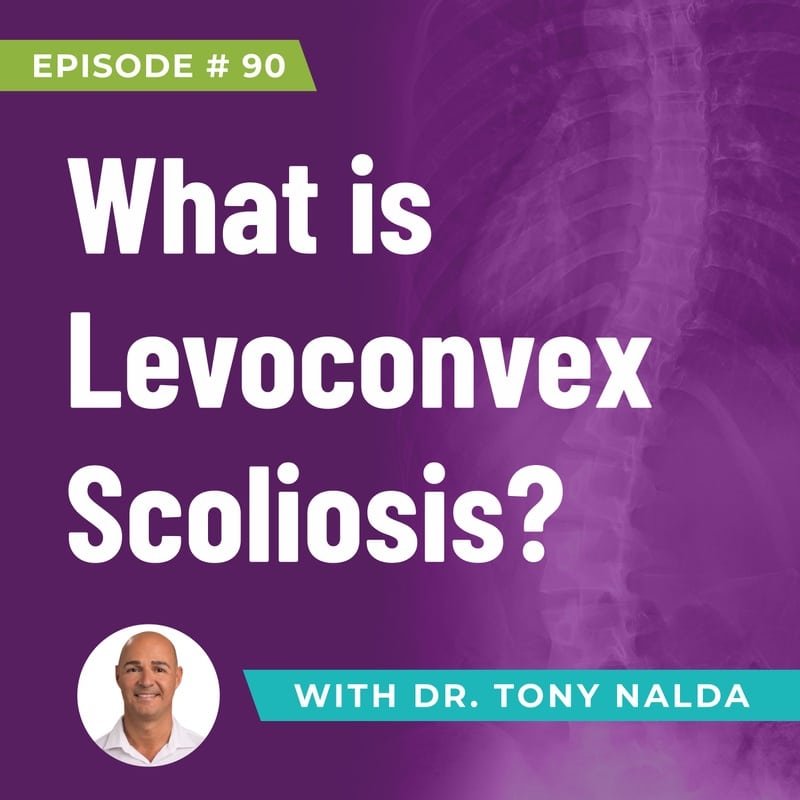Episode 90: What is Levoconvex Scoliosis?
When discussing the normal anatomy of the spine, it's essential to recognize the importance of maintaining straightness from the front and well-defined curves when viewed from the side. These natural curves play a crucial role in absorbing forces, enhancing flexibility, and distributing stress throughout the spine. However, when these healthy curves are lost and displaced into the frontal view, it leads to a condition known as scoliosis.
Scoliosis, characterized by an abnormal sideways curvature of the spine, becomes notable when the deviation measures 10 degrees or more, accompanied by rotational elements. Understanding this condition is crucial, especially when it comes to identifying potential underlying pathologies and tailoring effective treatment plans.
Levoconvex Scoliosis: What Sets it Apart?
Levoconvex scoliosis is a specific subtype of scoliosis, indicating a leftward bend in the spine with the convex side facing outward. This classification holds particular significance in the thoracic spine, where the outer edge of the curve leans towards the left. This distinction helps in crafting targeted treatment strategies based on the direction of the curvature.
Unlike more typical forms of scoliosis, Levoconvex scoliosis in the thoracic spine is considered atypical due to its associations with underlying pathologies. These may include neuromuscular conditions, congenital malformations, degenerative diseases, or trauma affecting the spinal cord. While atypical, it's important to note that this diagnosis doesn't equate to it being untreatable.
A diagnosis of Levoconvex scoliosis necessitates a customized treatment approach, taking into account the unique aspects of the condition. Reversing certain approaches and addressing potential complications associated with underlying pathologies become key considerations. The goal is to rule out negative impacts on treatment and ensure the safety of the chosen interventions.
Optimistic Outlook
Contrary to misconceptions, a diagnosis of Levoconvex scoliosis is not a roadblock to effective treatment. Adopting a proactive stance and addressing the condition comprehensively can yield positive outcomes. At the Scoliosis Reduction Center, our approach involves assessing underlying conditions, creating personalized treatment programs, and actively managing and reducing scoliosis to optimize outcomes for our patients.
If you want to embark on a journey toward a healthier, more comfortable life but don’t know how listen to Dr. Tony Nalda’s podcast to know more.
Artlist.io 847544
Podcast: Play in new window | Download
Subscribe: RSS
Dr. Tony Nalda
DOCTOR OF CHIROPRACTIC
After receiving an undergraduate degree in psychology and his Doctorate of Chiropractic from Life University, Dr. Nalda settled in Celebration, Florida and proceeded to build one of Central Florida’s most successful chiropractic clinics.
His experience with patients suffering from scoliosis, and the confusion and frustration they faced, led him to seek a specialty in scoliosis care. In 2006 he completed his Intensive Care Certification from CLEAR Institute, a leading scoliosis educational and certification center.
About Dr. Tony Nalda
 Ready to explore scoliosis treatment? Contact Us Now
Ready to explore scoliosis treatment? Contact Us Now








